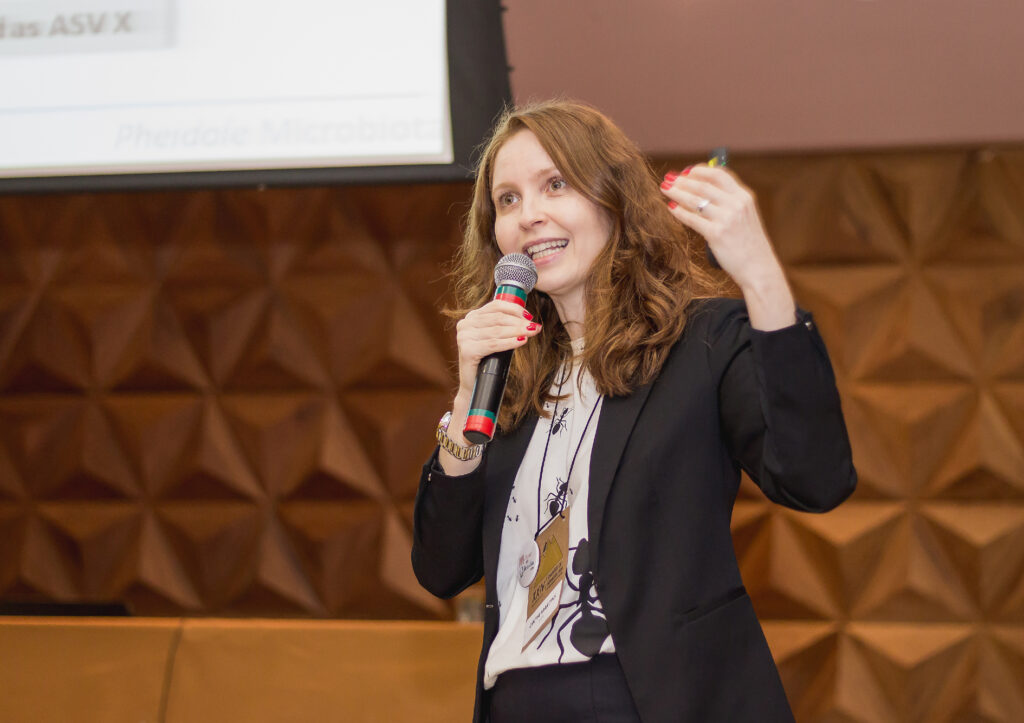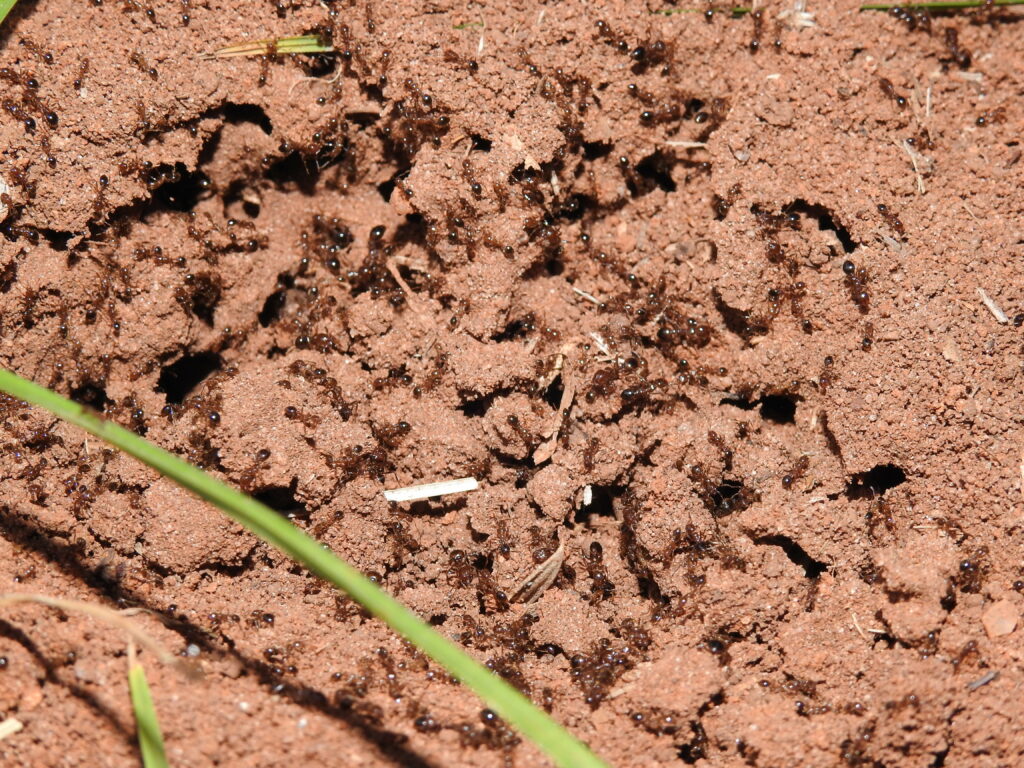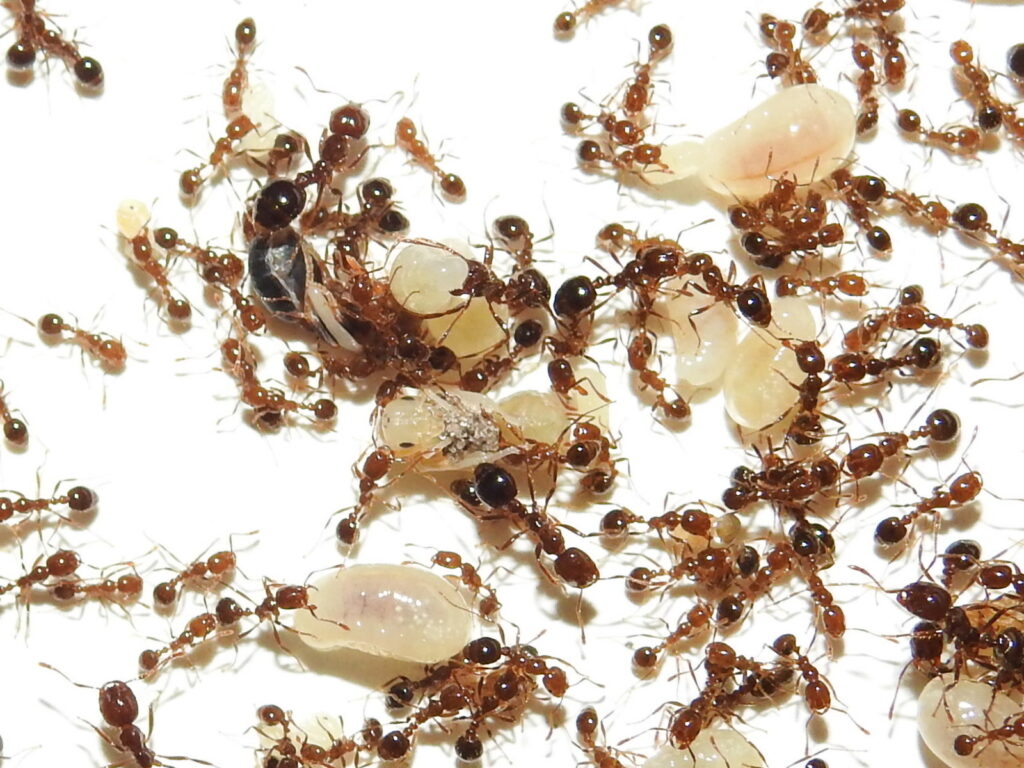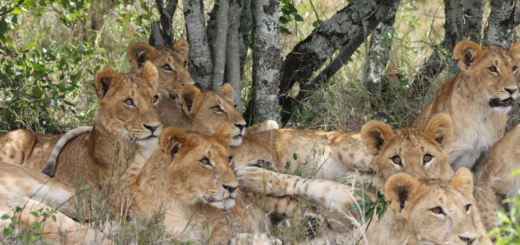New Wolbachia strains detected in the genus Solenopsis

In the recent article “New Strains of Wolbachia Unveiling the Complexity of This Symbiotic Interaction in Solenopsis (Hymenoptera: Formicidae)” published in Microbiology Research (MDPI), Martins et al.* revealed 15 new Wolbachia strains in the genus Solenopsis through Multilocus Sequence Typing (MLST) methodology. They also found that Wolbachia diversity correlated with the host’s mitochondrial DNA suggesting the occurrence of vertical transfer, and human activities likely shuffle the distribution pattern of Wolbachia and Solenopsis, as well. Here, the first author Cíntia Martins highlights the main points.
@martins_lab is on Instagram and on Twitter @_CintiaMartins_
An Interview compiled by Patrick Krapf, Felix Oberhauser, Sheethal Vepur

MNB: Could you tell us a bit about yourself?
CM: I am a passionate myrmecologist working with ants since my second undergrad year (it has been 17 years – even I got surprised by this number just now when I did the math!). 11 years ago, I flew far away from my hometown and family, to be a professor and create my own lab. For me, science and education are important ways to make great changes in the world, for example, being inclusive and making a difference in people’s lives. I wish I could show every girl what I saw in my early childhood when I visited the University campus! And this is something I am working on with my outreach project in my institution Parnaíba Delta Federal University (now we are not active because of the pandemic and due to my maternity leave). I am also a mother of a lovely girl!

This is what a nest looks like before we disturb the ants (© José H. Pezzonia). 
And this is how it looks after we disturb it. Actually fire ants here in Brazil are known as ants that make us wash our feet. When we get to disturb their nests they defend themselves by spreading and using their sting! We get stung particularly in our feet and legs and the burning sensation and the pain makes us desperately look for a place to wash our feet! (© José H. Pezzonia)
MNB: Could you briefly outline your recently published article in layman’s terms?
CM: Symbiosis is the association of two organisms of different species that live together and mutually benefit. Wolbachia bacteria and insects represent one of these cases! They live together and few studies show that they could benefit from this symbiosis. We still have a long way to go to understand this intricate and enigmatic relationship between Wolbachia and ants. One important way to help us understand this relationship is to study the diversity of the symbionts and what is shaping their success with their partners. For this kind of study, we use DNA sequencing of specific genes to know the molecular diversity of both partners. We focused our study on a group of ants that we already knew to be associated with Wolbachia (based on previous studies): the fire ants (several species of the genus Solenopsis). This genus has a lot of species that are native to South America, and are widely spread in Brazil where they are associated in areas with human activities. We collected ants in Brazilian territory where this ant genus is native and sequenced DNA of both ants and their symbionts. Our analysis shows that there is an association between Wolbachia and the host, which means that related hosts have similar strains. As there is no correlation between the geographic occurrence of Wolbachia and the host, geography does not drive the association. Most importantly, we described fifteen new strains and eleven previously unknown alleles from Wolbachia associated with ants, which highlights the complexity and novelty of Wolbachia diversity associated with fire ants and the need for further studies that focus on the understanding of this intricate relationship in specific groups of ants and in ants in general.
MNB: What is the take-home message of your work?
CM: When we think about biodiversity, we sometimes don’t remember that there is a hidden biodiversity often neglected, which is the biodiversity of the microbiota associated! Therefore, we should remember that the invisible to the eyes can harbor a lot of important information!
MNB: What was your motivation for this study?
CM: Fire ants are native to South America and from previous research, we know that Wolbachia could be associated with these ants. But mostly our motivation was to reveal the beauty of this enigmatic association. We have limited knowledge of the relationship between Wolbachia and ants (if it is commensalistic or if this has an influence on host reproduction and its survival, thus what are the impacts on ants’ evolution). We are intrigued by these questions: What shapes this association? Is there any association between geographic location and the Wolbachia strains associated with these ants? In fact, we have a lot of interesting questions that are unanswered and this is the motivation and the beauty of symbiotic associations, especially with this unique symbiont – Wolbachia.
MNB: What was the biggest obstacle you had to overcome in this project?
CM: Since Brazil is a huge territory, the collection of samples was the biggest obstacle, as we wanted to cover most areas we possibly could. And this is manually intensive and a time-taking process.
MNB: Do you have any tips for others who are interested in doing related research?
CM: Make sure to look at the microcosms! You will stumble upon a plethora of new findings. And don’t get less excited if you find even more new questions to explore after you have your results!
MNB: Where do you see the future for this particular field of ant research?
CM: Genomics! This is the method that allows us to better understand this enigmatic relationship of Wolbachia with its hosts in future work.









Still a lot of work needs to be done…..